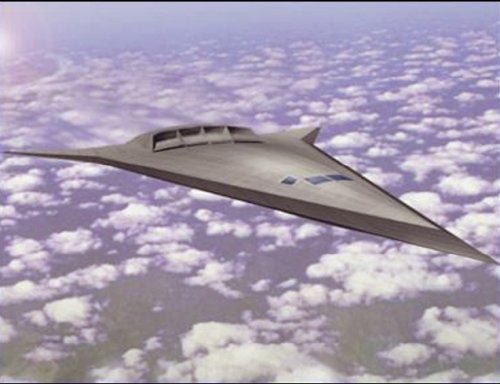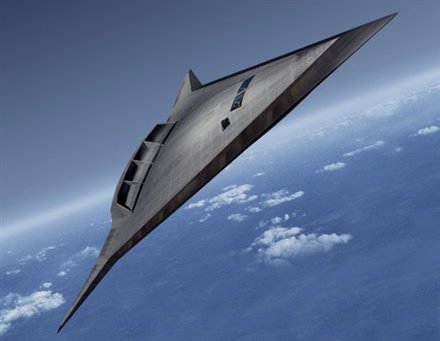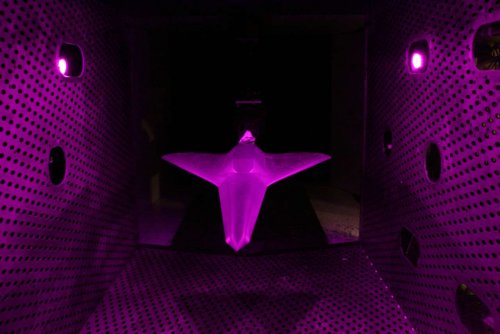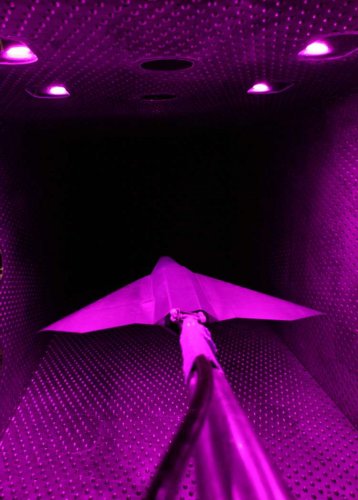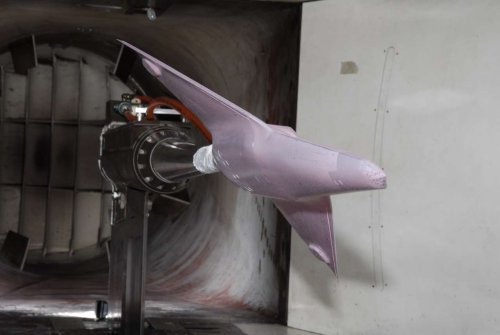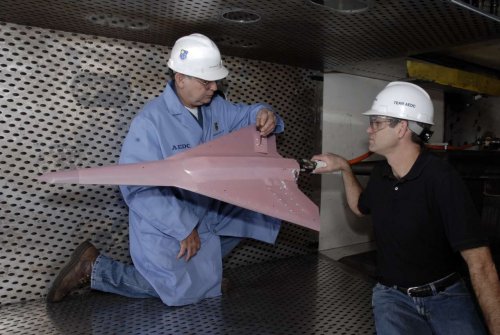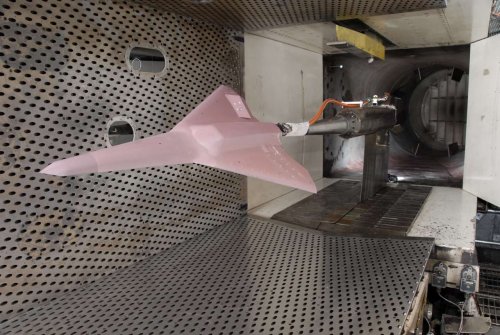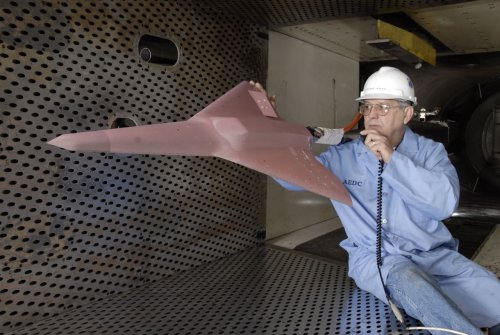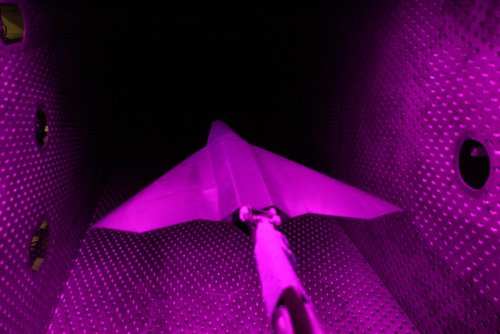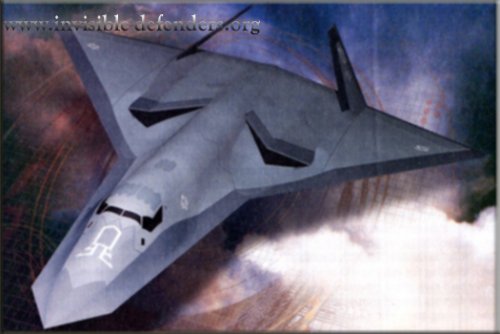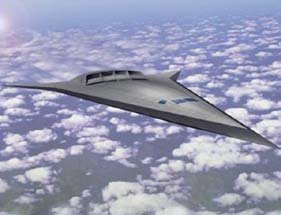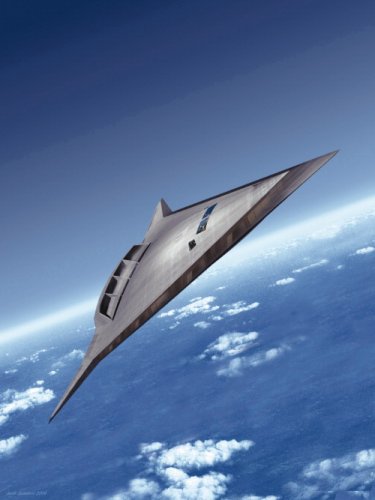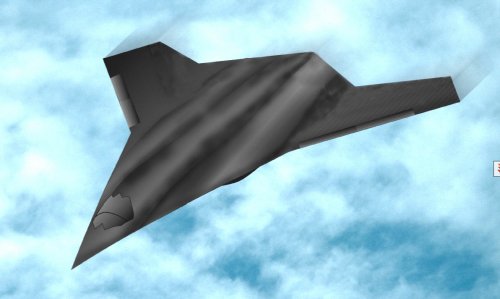- Joined
- 1 April 2006
- Messages
- 11,360
- Reaction score
- 10,132
http://www.va.afrl.af.mil/success_stories/pdf/STAV%20testing%20%20VA-S-07-08.pdf
AFRL Assists Northrop Grumman With Supersonic Tailless Air Vehicle Tests
AFRL provided a full-motion flight simulation environment to test candidate control systems for Northrop Grumman’s Supersonic Tailless Air Vehicle (STAV) concept. The testing, conducted in the lab’s Large-Amplitude Multimode Aerospace Research Simulator (LAMARS), incorporated design improvements based on new wind tunnel data and reflecting two additional controllers, ground effects, and modified landing gear.
Throughout the testing, three Northrop Grumman test pilots evaluated aircraft performance during takeoff, landing, and subsonic and supersonic tracking tasks. The pilots used the Cooper-Harper rating scale, a method that assigns quantitative scores according to desired and adequate performance criteria, to evaluate aircraft handling qualities. Compared to the results of earlier tests performed in May 2006, the aircraft’s tracking and landing tasks received significantly higher ratings, due primarily to the incorporated design modifications. The study allowed Northrop Grumman engineers to collect data on over 100 different parameters throughout more than 300 tests runs. They were also able to observe the effects of auto-throttle on the STAV concept. This evaluation and data collection effort will facilitate further improvements to the concept. Once Northrop Grumman has incorporated the necessary design modifications, the research team plans to return to AFRL’s LAMARS facility for additional testing.
The STAV concept entails an effort to reduce the weight and drag encountered in traditional supersonic aircraft designs. This reduction is achievable by eliminating the tail and replacing conventional tail control surfaces with more innovative control effectors.
VERY interesting person involved in STAV:
Steven C. Komadina
Northrop Grumman Corporation
Education:
B.S. Aerospace Engineering, Arizona State University, 1980
After graduating from Arizona State University, Mr. Komadina started work at Northrop’s Aircraft Division in Hawthorne, CA and has remained at the company his entire career. He was initially assigned to the Advanced Design department and worked on competitive aircraft assessment. He was later assigned to the Advanced Projects organization where he worked in the aero-performance department and supported the Defense Advanced Research Project Agency (DARPA) TACIT BLUE stealth demonstrator program and the Air Force Advanced Technology Bomber (ATB) proposal effort; which turned into the B-2 program. He supported the TACIT BLUE program through completion of flight testing and follow-on operational vehicle studies. Mr. Komadina then worked on the Northrop Advanced Tactical Aircraft (ATA) internal research and development (R&D) studies and the following Navy ATA competition where he was the lead vehicle performance engineer and later the lead aerodynamic design engineer. After that he worked on an advanced technology demonstrator competition and led the aerodynamic design, analysis, and test activities(-sic!). Mr. Komadina then for several years led all of the flight sciences activities for an advanced transport technology program, many internal technology R&D programs, and the Unmanned Combat Air Vehicle (UCAV) program. He then became the Air Vehicle integrated product team (IPT) lead for the Future Strike Systems business area, and in parallel was the Chief Engineer on the DARPA Quiet Supersonic Platform (QSP) program. He became the functional manager for the Adv. Flight Sciences & Weapons Integration department in 2004. Most recently he was the Chief Engineer on the DARPA Oblique Flying Wing proposal and program through Milestone 1 and program manager on three technology R&D contracts related to next generation long range strike supersonic tailless air vehicles. Mr. Komadina is also the program manager for the Aerodynamic Efficiency Improvement program that is investigating aeroservoelastics, gust load alleviation and swept wing laminar flow control related to next-generation high altitude intelligence, surveillance, and reconnaissance (ISR) platforms.
AFRL Assists Northrop Grumman With Supersonic Tailless Air Vehicle Tests
AFRL provided a full-motion flight simulation environment to test candidate control systems for Northrop Grumman’s Supersonic Tailless Air Vehicle (STAV) concept. The testing, conducted in the lab’s Large-Amplitude Multimode Aerospace Research Simulator (LAMARS), incorporated design improvements based on new wind tunnel data and reflecting two additional controllers, ground effects, and modified landing gear.
Throughout the testing, three Northrop Grumman test pilots evaluated aircraft performance during takeoff, landing, and subsonic and supersonic tracking tasks. The pilots used the Cooper-Harper rating scale, a method that assigns quantitative scores according to desired and adequate performance criteria, to evaluate aircraft handling qualities. Compared to the results of earlier tests performed in May 2006, the aircraft’s tracking and landing tasks received significantly higher ratings, due primarily to the incorporated design modifications. The study allowed Northrop Grumman engineers to collect data on over 100 different parameters throughout more than 300 tests runs. They were also able to observe the effects of auto-throttle on the STAV concept. This evaluation and data collection effort will facilitate further improvements to the concept. Once Northrop Grumman has incorporated the necessary design modifications, the research team plans to return to AFRL’s LAMARS facility for additional testing.
The STAV concept entails an effort to reduce the weight and drag encountered in traditional supersonic aircraft designs. This reduction is achievable by eliminating the tail and replacing conventional tail control surfaces with more innovative control effectors.
VERY interesting person involved in STAV:
Steven C. Komadina
Northrop Grumman Corporation
Education:
B.S. Aerospace Engineering, Arizona State University, 1980
After graduating from Arizona State University, Mr. Komadina started work at Northrop’s Aircraft Division in Hawthorne, CA and has remained at the company his entire career. He was initially assigned to the Advanced Design department and worked on competitive aircraft assessment. He was later assigned to the Advanced Projects organization where he worked in the aero-performance department and supported the Defense Advanced Research Project Agency (DARPA) TACIT BLUE stealth demonstrator program and the Air Force Advanced Technology Bomber (ATB) proposal effort; which turned into the B-2 program. He supported the TACIT BLUE program through completion of flight testing and follow-on operational vehicle studies. Mr. Komadina then worked on the Northrop Advanced Tactical Aircraft (ATA) internal research and development (R&D) studies and the following Navy ATA competition where he was the lead vehicle performance engineer and later the lead aerodynamic design engineer. After that he worked on an advanced technology demonstrator competition and led the aerodynamic design, analysis, and test activities(-sic!). Mr. Komadina then for several years led all of the flight sciences activities for an advanced transport technology program, many internal technology R&D programs, and the Unmanned Combat Air Vehicle (UCAV) program. He then became the Air Vehicle integrated product team (IPT) lead for the Future Strike Systems business area, and in parallel was the Chief Engineer on the DARPA Quiet Supersonic Platform (QSP) program. He became the functional manager for the Adv. Flight Sciences & Weapons Integration department in 2004. Most recently he was the Chief Engineer on the DARPA Oblique Flying Wing proposal and program through Milestone 1 and program manager on three technology R&D contracts related to next generation long range strike supersonic tailless air vehicles. Mr. Komadina is also the program manager for the Aerodynamic Efficiency Improvement program that is investigating aeroservoelastics, gust load alleviation and swept wing laminar flow control related to next-generation high altitude intelligence, surveillance, and reconnaissance (ISR) platforms.

